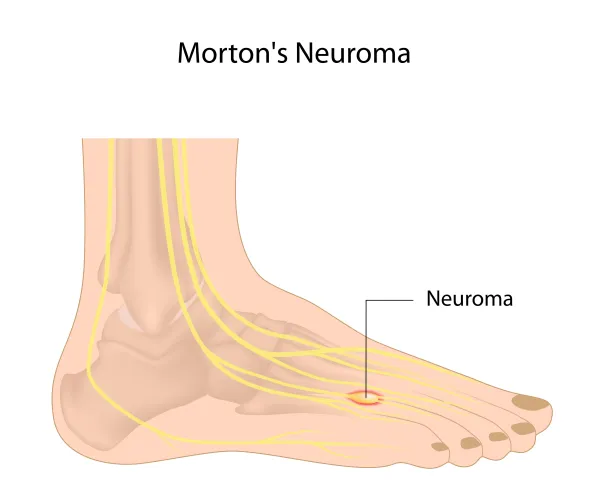Podiatry Coding & Billing Alert
Get the Scoop on New CPT® 2019 Skin Biopsy Codes With These Handy Tips
Hint: Learn more about the tangential skin biopsy technique. If you’re used to reporting 11100 and +11101 for skin biopsies, then you’re going to need readjust your habit before January 1, 2019. That’s because CPT® 2019 deletes these codes and puts six new options in their place. That means it’s up to you to learn how to report these new codes and their related guidelines, or your practice could see an influx of denials. Deletions: CPT® 2019 will delete skin biopsy codes 11100 (Biopsy of skin, subcutaneous tissue and/or mucous membrane (including simple closure), unless otherwise listed; single lesion) and +11101 (… each separate/additional lesion (List separately in addition to code for primary procedure). “Codes 11100 and +11101 have been under scrutiny by CMS for some time for being used in inconsistent ways,” says Christine Marcelli, CPC, CPPM, CSFAC, practice manager at Stark County Foot & Ankle Clinic in Canton, Ohio. “There is a lack of clarity in regards to the technique used in those codes.” Additions: Instead, you’ll choose from the following new codes: What this means for you: The impact will be positive since they are specific about the technique and depth of the biopsy performed, Marcelli says. As far as the new biopsy guidelines, they will be very helpful because coders will be able to code more accurately based upon the documentation of the technique the physician used, she adds. Read on to learn handy tips on how to report these new skin biopsy codes, and tune into Podiatry Coding and Billing Alert Vol. 11, No. 1 next month for even more info about how to correctly report these new codes. Tip 1: Know Whether You Can Report Biopsy Separately CPT® 2019 added a whole section of guidelines to go along with new codes 11102 through +11107. According to CPT® guidelines, codes 11102 through +11107 “indicate that the procedure to obtain tissue solely for diagnostic histopathologic examination was performed independently or was unrelated or distinct from other procedures/services provided at that time.” Can report separately: So, you may separately report biopsies the podiatrist performed on different lesions or different sites on the same date of service because they are not considered components of other procedures, per CPT® guidelines. Do not report separately: However, if the podiatrist performs a certain surgical procedure in the integumentary system like an excision, destruction, or shave removal, then the removed tissue is often submitted for a pathology exam. In this case, obtaining the tissue for pathology during those procedures is considered a component of the procedure. So, “this obtaining of tissue is not considered a separate biopsy procedure and is not separately reported,” according to CPT® guidelines. Tip 2: Understand If Procedure Was Actually Biopsy Or Not When you report skin biopsies, make sure you know what CPT® considers a biopsy and what it doesn’t consider a biopsy. In the new guidelines, CPT® identifies three specific techniques physicians can use to obtain skin biopsies: tangential, punch, and incisional. On the other hand, “sampling of stratum corneum only, by any modality (eg, skin scraping, tape stripping) does not constitute a skin biopsy procedure and is not separately reportable,” according to CPT® guidelines. Tip 3: Dive Into 2 New Tangential Biopsy Codes CPT® 2019 will add new tangential biopsy codes 11102 and +11103 (Tangential biopsy of skin (eg, shave, scoop, saucerize, curette); each separate/additional lesion (List separately in addition to code for primary procedure)). Tangential: As the descriptor for 11102/+11103 implies, you can use these codes when your provider takes a sample “along the tangent, or the sample is superficial,” according to Sherika Charles, CDIP, CCS, CPC, CPMA, compliance analyst with UT Southwestern Medical Center in Dallas, Texas. The provider can accomplish this using the following techniques or instruments: CPT® guidelines for tangential biopsies: Physicians can perform tangential biopsies with a sharp blade, like a flexible biopsy blade, obliquely oriented scalpel or curette “to remove a sample of epidermal tissue with or without portions of underlying dermis,” according to CPT® guidelines. When a physician performs a tangential biopsy, he does so to get a tissue sample from a lesion for a diagnostic pathologic exam. Don’t miss: CPT® does not consider the tangential skin biopsy technique an excision. Additionally, “The tangential biopsy technique may be represented by a superficial sample and does not involve the fill thickness of the dermis, which could result in portions of the lesion remaining in the deeper layers of the dermis,” according to CPT® guidelines. Coding example: The podiatrist performed a tangential biopsy on a single lesion on the patient’s foot. He employed the shave technique, where he removed a tissue sample by elevating the skin. The podiatrist then used a straight blade to slice the skin to the epidermis level. You would report 11102 for this service.
Related Articles
Podiatry Coding & Billing Alert
- CPT® 2019:
Get the Scoop on New CPT® 2019 Skin Biopsy Codes With These Handy Tips
Hint: Learn more about the tangential skin biopsy technique. If you’re used to reporting 11100 [...] - Bunions:
Ace Your Bunion Coding With This Expert Advice
Don’t miss: There are special ICD-10 codes you should use when reporting bunionettes. In your [...] - Mythbuster:
Bust 3 External Cause Code Myths to Elevate Your ICD-10 Coding
Remember: Never report external cause codes as the primary diagnosis. External cause codes V00- (Pedestrian [...] - You Be the Coder:
Don't Confuse Achilles Tendinitis With Peroneal Tendinitis
Question: Can you explain the difference between Achilles and peroneal tendinitis? Which diagnosis codes should [...] - Reader Question:
MLN Matters® Further Clarifies Modifier GT
Question: Someone in my office mentioned that they read another update about modifier GT. Can [...] - Reader Question:
Familiarize Yourself With These Rules For Online E/M Services
Question: Can you explain how we should document email exchanges between a patient or patient’s [...] - Reader Question:
Demystify This Hyperkeratotic Lesion Scenario
Question: The podiatrist used a scalpel to remove a benign hyperkeratotic lesion on the patient’s [...]




